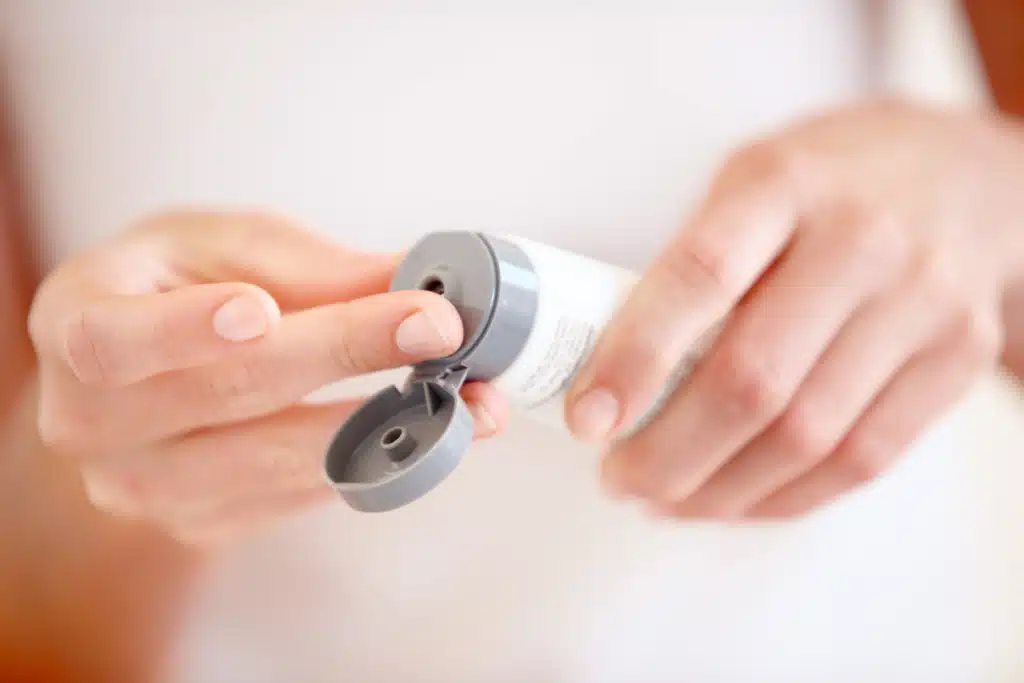It’s officially Women’s Health Week, a full seven days dedicated to your well-being. While this may conjure images of joining a gym or eating more fruits and vegetables, a chance to be healthier could also be sitting right on your bathroom counter: beauty products.
Instagram feeds are full of them and we, as women, can’t seem to get enough. There’s no denying how, even on the worst of days, a brand-new bottle of nail polish or shampoo can make anything seem possible.
But there’s a downside to using many of the beauty and personal care products we see on the market today. A widespread chemical ingredient called phthalates used in hundreds of products may be linked to an increased burden of uterine fibroids,1 a common noncancerous tumor of the female reproductive tract that can cause heavy periods, pelvic pain, and other serious symptoms.
Phthalates, also called plasticizers, are a group of chemicals used to make plastics more flexible; some phthalates are also used as solvents or dissolving agents.2 Along with being found in obvious products, such as vinyl flooring, plastic clothing (raincoats), and plastic food and beverage containers, phthalates are also found in personal care products, such as soaps, shampoos, hair spray, nail polish, deodorant, and perfume.2,3 Phthalates found in personal care items are commonly a fragrance ingredient used to help prolong the scent of the product.4 The ones typically used in these products (and in plastic food and beverage containers) are known as DBP, DEP, DEHP, and DMP.3
According to the Centers for Disease Control and Prevention, human health effects from exposure to low levels of phthalates are unknown, but animal studies have shown some types of phthalates to affect the reproductive system.2 It’s also important to know that reports have shown adult women to have higher levels of urinary metabolites than men for phthalates that are used in shampoos, soaps, body washes, cosmetics, and other personal care products.2
Research examining the possible link between phthalate exposure in women and uterine fibroid burden was published in a recent issue of Fertility and Sterility.1 The study included 57 premenopausal women undergoing either hysterectomy (surgical removal of the uterus) or myomectomy (surgical removal of fibroids) for fibroid treatment. Researchers checked urine samples for 14 phthalate biomarkers and used patient medical records to find the diameter of the largest fibroid as well as uterine size. Factors like fibroid size and number can enlarge the uterus.5
Results showed that higher concentrations of phthalates, especially for individual DEHP metabolites (MEHHP, MEOHP, MECPP), ∑DEHP, and ∑AA phthalates, were linked to an increase in uterine volume.1 Researchers found that twice the ∑DEHP and ∑AA phthalates was associated with a 33.2% and 26.8% increase in uterine volume, respectively. They found few associations between phthalate biomarkers and fibroid size.
Although this was a preliminary study and more research is needed to verify the relationship between phthalates and fibroids, there are steps you can take to reduce your phthalate exposure around the home:3,4
Read labels. Avoid products with “fragrance” or “perfume” ingredients. Go for “phthalate-free” or “no-synthetic fragrance” products instead.
Check your plastic. When using plastic bottles, numbers 3 and 7 may have phthalates. Avoid plastic wrap made from PVC.
Switch to glass. Recycle your plastic food containers and invest in glass and/or stainless steel containers and water bottles. If using plastic, never microwave it. Heat allows chemicals to transfer from the plastic into your food or drink.
Go organic. Eat more organic food items, especially fruits and vegetables. Try to eat less food packaged in plastic.
Filter your water. Purchase a home water-filtration system that removes phthalates.
Exercise more. Phthalates stored in the body could be excreted in sweat.
Until we know more about how phthalates affect our bodies and reproductive systems in particular, hold onto your credit card the next time you see that must-have beauty product. A little patience and research can go a long way.
REFERENCES
- Zota, A. R., Geller, R. J., Calafat, A. M., et al. (2019). Phthalates exposure and uterine fibroid burden among women undergoing surgical treatment for fibroids: A preliminary study. Fertil Steril, Jan;111(1):112-121.
- Centers for Disease Control and Prevention. (2017, Apr 7). Phthalates factsheet. Retrieved from https://www.cdc.gov/biomonitoring/Phthalates_FactSheet.html
- Kahn, J. (2019). 5 new reasons to avoid phthalates + how to limit your exposure. Retrieved from https://www.mindbodygreen.com/0-24825/5-new-reasons-to-avoid-phthalates-how-to-limit-your-exposure.html
- Made Safe. (n.d.). #ChemicalCallout: Phthalates. Retrieved from https://www.madesafe.org/science/hazard-list/phthalates/
- Fibroid Treatment Collective. (2016, May 6). Noticing a stomach bulge? You may have fibroids. Retreived from https://fibroids.com/blog/noticing-stomach-bulge-may-fibroids/







